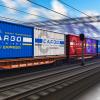Search
Displaying Results 1 - 9 of 9
Many incidents in freight transport are attributed to poor practices in the packing of freight containers, including inadequate securing of cargo, overloading and incorrect declaration of contents. The victims of these incidents may be the general public or transport and supply chain workers, who
Customs-2-Customs (C2C) electronic exchange of information could greatly support risk assessment for transit operations and, ultimately, facilitate legitimate trade, improve and secure border crossing as well as reduce related costs. This was one of the findings of a workshop jointly organized
Countries of Central Asia, the Caucasus and Eastern Europe have been hit hard by the socioeconomic impacts of the COVID-19 pandemic, which threatens to derail sustainable development progress in the region.
However, there is also a stronger momentum towards regional cooperation, and countries can
The diesel scandal in Europe has made us aware of the potential trade-offs between different fields of policy. While trying to reduce greenhouse gas emissions, policies to subsidize diesel cars were made without taking into account that diesel emissions have serious negative impacts on air quality
An underappreciated and often overlooked issue when developing safe and sustainable transportation systems in any nation is thorough and up-to-date statistics on road transport and road safety. Good, reliable statistics support governments and decision makers to understand what issues to address
Countries along the middle corridor that connects Central Asia with Europe have agreed on concrete next steps to accelerate the interconnection of their national customs systems with the eTIR international system in an effort to digitalize transit in the region.
At a recent TIR Executive Board
Lockdowns, border closures and restrictions to contain the COVID-19 pandemic have disproportionately impacted landlocked developing countries (LLDCs) in Central Asia and the Caucasus, which already face significant economic challenges due to the lack of territorial access to the sea and higher
The transport costs of the world`s 32 Landlocked Developing Countries (LLDCs) are on average 50% higher than developing countries that have access to the open sea. If containerized imports are considered, LLDCs have costs that are 85% higher than the world average. As a result, LLDC exports are
Landlocked developing countries (LLDCs) face many complex challenges. Due to their geographic remoteness, their lack of direct access to the open sea and the high transport and transit costs they face, they are at a significant economic disadvantage compared to the rest of the world. The Euro-




